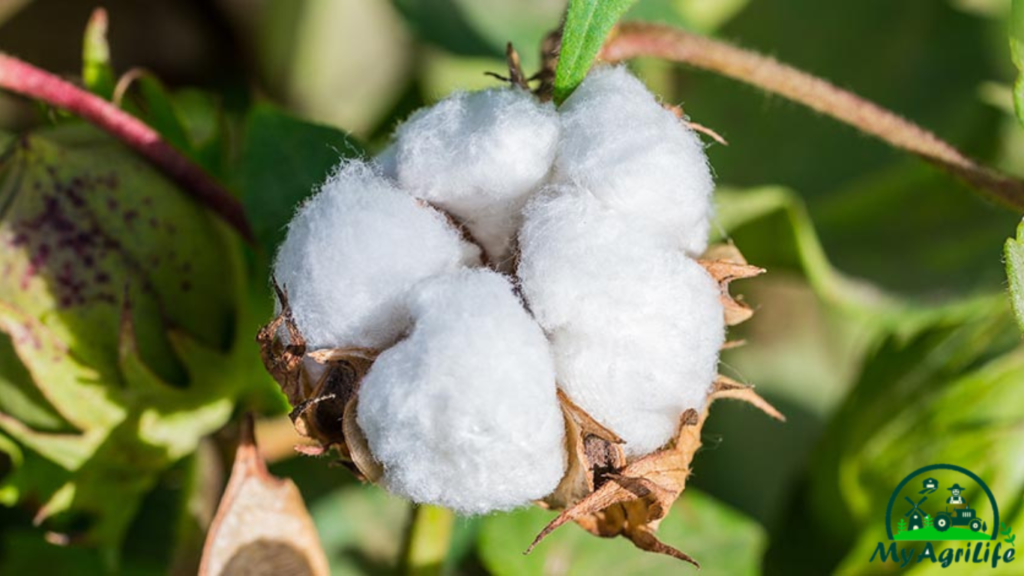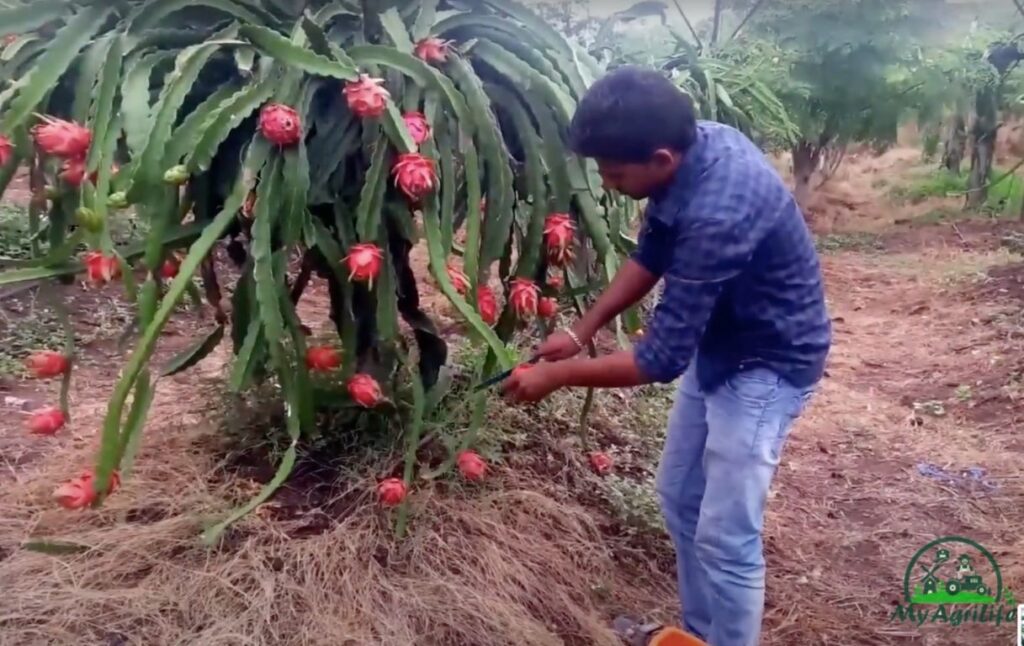Guava is a tropical fruit that is native to Central and South America, but is now widely cultivated throughout the world in subtropical and tropical regions. It is known for its unique taste, which is a combination of sweet and tart flavors, and it is often used in culinary preparations.
Guava is a good source of vitamin C, fiber, and antioxidants, which help to boost the immune system and promote overall health. It also contains other important vitamins and minerals, including vitamin A, potassium, and folate.
There are several varieties of guava, including yellow, red, and white. The flesh of the fruit can be eaten raw, or it can be used in various culinary preparations, such as jams, jellies, juices, and desserts. The seeds of the fruit are also edible and can be roasted or ground into a paste.
In addition to its culinary uses, guava is also used in traditional medicine to treat a variety of ailments, including diarrhea, constipation, and high blood pressure. Its leaves and bark contain compounds that have been shown to have antibacterial and anti-inflammatory properties, and may also have potential in the treatment of cancer.
Seed Specification Guava
The specifications of guava seeds can vary depending on the variety of guava, but here are some general characteristics:
1.Size: Guava seeds are generally small, ranging from 2-4 mm in length and 1-2 mm in width.
2.Color: Guava seeds are typically light brown or tan in color, with a hard outer shell.
3.Germination: Guava seeds have a high germination rate, with an average of 80-90% successful germination.
4.Viability: Guava seeds can remain viable for up to 3 years if stored in a cool, dry place.
5.Seedling characteristics: Guava seedlings typically have a strong taproot and a single stem, with the first true leaves appearing within 2-3 weeks of germination.
6.Seed production: Guava trees can produce large quantities of seeds, with an average of 250-300 seeds per fruit.
When purchasing guava seeds, it is important to ensure that they come from a reputable supplier and that they are of good quality. It is also important to follow proper seed storage and germination procedures to ensure successful growth.
Land Preparation & Soil Health Guava
Land preparation and soil health are important considerations when growing guava trees. Here are some tips for preparing the land and maintaining soil health for optimal guava growth:
1.Land preparation: Before planting guava trees, it is important to clear the land of any weeds or other vegetation. The land should also be plowed or tilled to a depth of at least 30 cm to create a loose and aerated soil bed. If the soil is heavy or clayey, it may be necessary to amend it with organic matter, such as compost or manure, to improve drainage and fertility.
2.Soil pH: Guava trees grow best in slightly acidic to neutral soil, with a pH range of 5.5-7.0. It is important to test the soil pH before planting and adjust it if necessary by adding lime to raise the pH or sulfur to lower it.
3.Soil fertility: Guava trees require a well-balanced nutrient supply to grow and produce fruit. It is important to conduct soil tests to determine the nutrient content of the soil and apply fertilizers accordingly. Organic fertilizers, such as compost or manure, are recommended to improve soil fertility and provide a slow-release source of nutrients.
4.Soil moisture: Guava trees require consistent soil moisture to grow and produce fruit. The soil should be kept evenly moist, but not waterlogged, throughout the growing season. Irrigation may be necessary during dry periods or in areas with low rainfall.
5.Soil drainage: Guava trees do not tolerate waterlogged soil, so it is important to ensure that the soil has good drainage. If the soil is heavy or clayey, it may be necessary to amend it with organic matter or install drainage tiles to improve drainage.
By following these tips for land preparation and soil health, you can help ensure optimal growth and fruit production from your guava trees.
Crop Spray & Fertilizer Specification Guava
Crop spray and fertilizer specifications for guava trees can vary depending on the soil and environmental conditions, as well as the specific variety of guava. Here are some general guidelines to follow:
1.Fertilizer: Guava trees require a balanced fertilizer, with equal amounts of nitrogen, phosphorus, and potassium (NPK). Fertilizer should be applied in three equal doses during the growing season, with the first application in early spring, the second in mid-summer, and the third in early fall. The amount of fertilizer to apply depends on the age and size of the tree, but generally ranges from 200-400 grams of NPK per tree per year.
2.Organic fertilizer: Guava trees also respond well to organic fertilizers, such as compost or manure. Organic fertilizers can be applied in a similar manner as chemical fertilizers, with the same timing and amounts.
3.Crop spray: Guava trees are susceptible to a variety of pests and diseases, including fruit flies, aphids, and powdery mildew. Crop spray can be used to control these pests and diseases. It is important to use crop spray that is specifically formulated for guava trees and to follow the instructions carefully. Some recommended crop sprays for guava include neem oil, pyrethrin, and copper fungicide.
4.Timing: The timing of fertilizer and crop spray applications is important for optimal growth and fruit production. Fertilizer should be applied at the beginning of each growing season, while crop spray should be applied when pests or diseases are detected or as a preventative measure before the onset of the growing season.
5.Application: Fertilizer and crop spray should be applied evenly around the base of the tree, taking care not to damage the trunk or roots. It is important to apply the correct amount of fertilizer and crop spray to avoid overuse, which can damage the tree or lead to environmental pollution.
By following these guidelines for crop spray and fertilizer specifications, you can help ensure healthy growth and fruit production from your guava trees. It is important to consult with a local expert or agricultural extension service for specific recommendations for your area and soil conditions.
Weeding & Irrigation Guava
Weeding and irrigation are important aspects of guava tree care, as they can affect the growth and productivity of the tree. Here are some tips for weeding and irrigation for guava trees:
1.Weeding: Weeds can compete with guava trees for nutrients and water, so it is important to keep the area around the tree weed-free. Hand weeding or hoeing can be effective for small areas, while herbicides can be used for larger areas. It is important to read and follow the instructions carefully when using herbicides and to avoid getting the herbicide on the guava tree or its roots.
2.Mulching: Mulching around the base of the tree can help suppress weeds and retain moisture in the soil. Organic mulches, such as compost, straw, or wood chips, are recommended. Mulch should be applied to a depth of 5-10 cm and should be kept away from the trunk of the tree to avoid moisture buildup.
3.Irrigation: Guava trees require consistent moisture throughout the growing season to produce high-quality fruit. Irrigation may be necessary in areas with low rainfall or during periods of drought. The frequency and amount of irrigation depend on the soil type and weather conditions, but generally, guava trees require about 2.5 cm of water per week. It is important to avoid overwatering, which can lead to root rot and other problems.
4.Irrigation methods: Irrigation can be done through drip irrigation, sprinkler irrigation, or flood irrigation. Drip irrigation is recommended for guava trees, as it delivers water directly to the roots and reduces water waste. If using sprinkler or flood irrigation, it is important to avoid getting water on the leaves or fruit, as this can increase the risk of fungal diseases.
By following these tips for weeding and irrigation, you can help ensure healthy growth and fruit production from your guava trees. It is important to consult with a local expert or agricultural extension service for specific recommendations for your area and soil conditions.
Harvesting & Storage Guava
Harvesting and storage are important factors to consider for guava fruit quality and shelf life. Here are some tips for harvesting and storing guava fruit:
1.Harvesting: Guava fruit is ready to harvest when it has reached its mature size, has a smooth skin, and is slightly soft to the touch. The fruit should be picked by hand and not dropped onto the ground, as this can damage the fruit and make it more susceptible to disease. Fruit that is harvested too early may not ripen properly, while fruit that is harvested too late may be overripe and have a lower quality.
2.Post-harvest handling: After harvesting, guava fruit should be handled carefully to avoid bruising or damaging the skin. The fruit should be placed in a clean container or basket and stored in a cool, dry place. Guava fruit is susceptible to damage from ethylene gas, so it is important to keep the fruit away from ethylene-producing fruits, such as bananas and apples.
3.Storage: Guava fruit can be stored at room temperature for 1-2 weeks or in the refrigerator for up to 2-3 weeks. However, refrigeration can cause chilling injury, so it is important to store the fruit at the correct temperature (10-15°C) to avoid this. To extend the shelf life of guava fruit, it can be frozen or canned.
4.Quality control: It is important to regularly inspect stored guava fruit for signs of decay or disease, such as soft spots or mold. Any fruit that is found to be damaged or decaying should be removed immediately to prevent further damage to the other fruit.
By following these tips for harvesting and storage, you can help ensure high-quality guava fruit with a longer shelf life. It is important to consult with a local expert or agricultural extension service for specific recommendations for your area and variety of guava.
Conclusion
In conclusion, guava farming can be a profitable and rewarding venture for farmers in tropical and subtropical regions. The key to successful guava farming is proper land preparation and soil health, effective crop spray and fertilizer application, timely weeding and irrigation, and careful harvesting and storage practices.
Guava is a nutritious fruit with many health benefits, making it a popular choice for consumers. With proper cultivation and care, guava trees can produce high-quality fruit with a long shelf life. It is important for farmers to stay informed about the latest agricultural practices and consult with local experts for specific recommendations for their area and variety of guava.
Overall, guava farming has the potential to provide a sustainable source of income for farmers while also contributing to the local economy and food supply.









